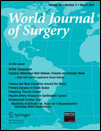How to Manage Thyroid Nodules With Two Consecutive Non-Diagnostic Results on Ultrasonography-Guided Fine-Needle Aspiration
Abstract
Background
The aim of this study was to investigate the factors for considering surgery on thyroid nodules that had non-diagnostic results on two consecutive cytology examinations.
Methods
A total of 104 thyroid nodules with two consecutive non-diagnostic cytology examinations in 104 patients were investigated. Nodules with one or more suspicious ultrasonography (US) features of marked hypoechogenicity, a not well defined margin, microcalcifications, or a taller-than-wide shape were assessed as sonographically suspicious. Those without any suspicious features were assessed as sonographically benign. The clinicopathologic characteristics of patients and US features of the nodules were compared according to malignancy and benignity. The odds ratio for predicting malignancy was calculated.
Results
Altogether, 12 nodules were malignant, and 92 were benign. Age, sex, nodule size, and solidness were not associated with malignancy (P = 0.73, 0.92, 0.48, and 0.73, respectively). The malignancy rate of sonographically suspicious nodules was 25.7%, higher than the 4.3% of sonographically benign nodules (P = 0.002). The odds ratio of sonographically suspicious nodules for predicting malignancy was 16.01 (95% confidence interval 2.36–108.54, P = 0.005).
Conclusions
Based on sonographic features, surgery can be performed selectively on nodules with two consecutive non-diagnostic cytology results.




